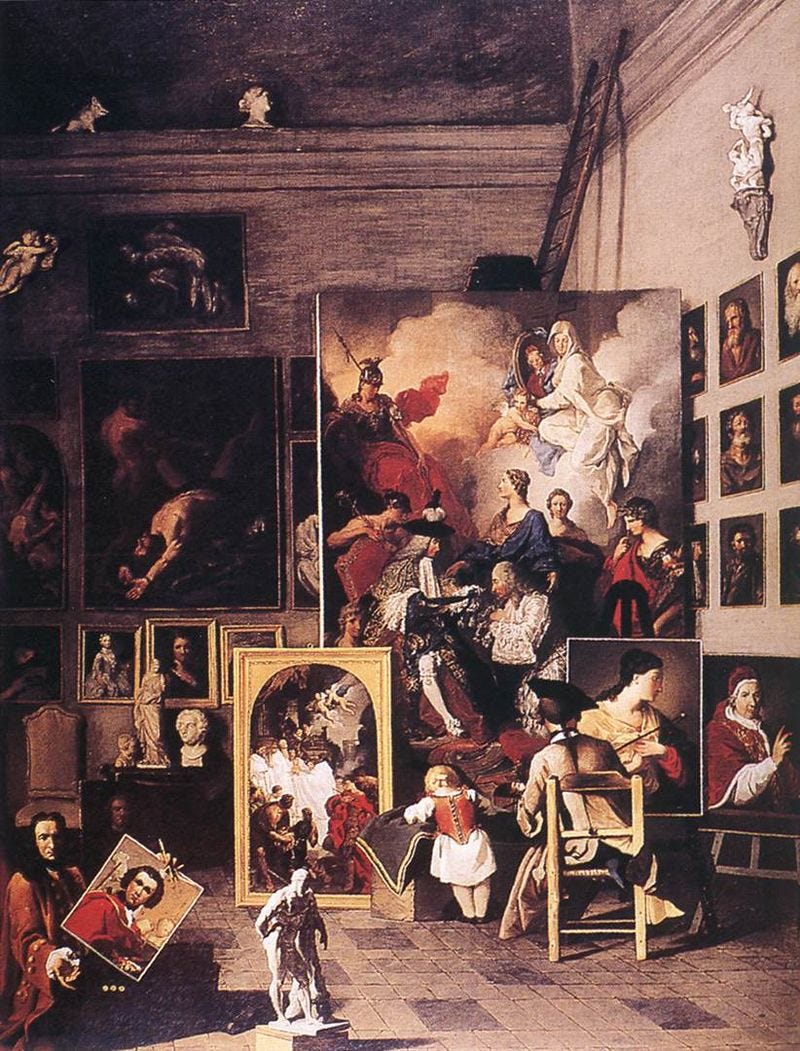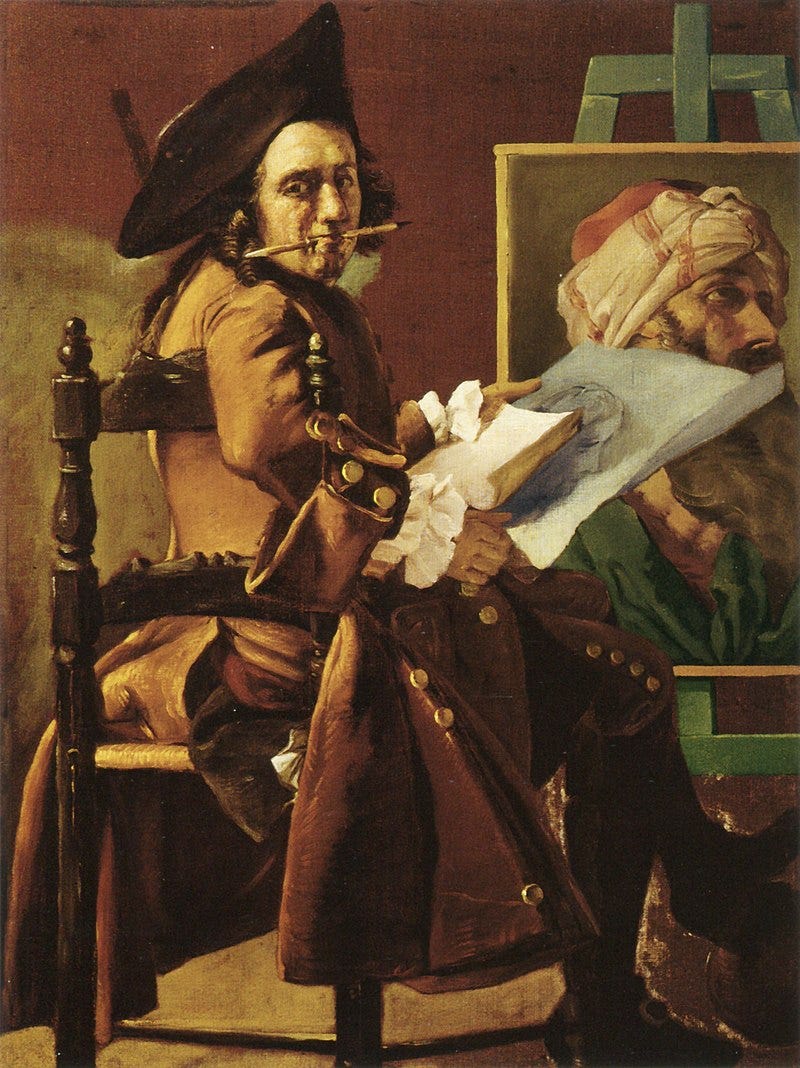Pierre Subleyras was an 18th century French painter who spent most of his professional career in Rome.
A highly charismatic man with an exceptional talent for portraiture; he may not be quite as well known as earlier masters of the Baroque era like Peter Paul Rubens, Diego Velazquez or Caravaggio - yet still, when he is at his best (as we can see in his state portrait of Pope Benedict XIV below) there is no doubt Pierre’s talent is on a par with any other artist of his era.
Thus, it is no surprise that he gained entry into the prestigious Accademia di San Luca (Rome’s foremost professional artist guild in the 1700s) - nor that his work came to be so in demand within the service of the Vatican,
But, while portraits are where he made his name - for our main work today, I wanted to take a chance to dive deeper into one of Pierre’s more audacious works. . . The Artist’s Studio.
A painting which holds a couple of really fascinating secrets, if we know what to look for!*
(*One of which is hidden in plaint sight - but the second was actually only discovered as recently as 1968!!)
So, to start with . . . the title of this work is pretty self explanatory.
Giving us a “behind the scenes” look into Pierre’s place of work - the aim seems to be geared towards overwhelming us with the sheer cacophony of masterpieces in his possession.
As such, this piece may well be read as one of the great artist boasts of all time - allowing Pierre to really show off his repertoire to any discerning popes or kings who may be interested in future commissions!
However, his intention here is actually far more inventive than that.
Because alongside showing us the results of his labours - Pierre’s studio is also designed to tell the artist’s own story too.
It is a self portrait.
Only, unlike any other self portrait before - the artist has depicted himself here no less than four times, at various stages of his artistic journey!
First, at the centre of our work (see above).
The figure on the left is Pierre as a child - working away at one of his first drawing attempts.
Then, to the right, we see Pierre as a young man. Possibly in his student days at the Academy in France, or just starting to make a name for himself after his exciting move to Rome at the age of twenty seven
And then, as we move our eyes down to the bottom left of the painting . . . we see the artist again; now as a fully fledged master of his craft.
Here, he stares out confidently at us - almost as if he is a circus ringmaster, inviting us into his own idea of “the greatest show on earth”.
And as for the painting he holds in his hand . . .
Yes, you guessed it!
It’s a self portrait too - meaning that, in this one image, Pierre is not only showing us every stage of his life so far . . . but, also, he is predicting that even after death, his image will be immortalized forever in the pages of art history!
_
So, on all these fronts, it is hard not to find ourselves admiring the sheer audacity of the man!
But believe it or not . . . he doesn’t stop there.
Because in 1968 - more than 200 years after Pierre put down his paintbrush for the last time - one last secret was found in his studio.
Only, this one was not hiding in plain site as the others . . . rather, it was discovered on the reverse side of his canvas!
And by now . . . I’m sure I do not even need to explain who this charismatic individual happens to be!
Though he had already given us four self portraits hidden amongst a whole room of his own masterworks . . . Pierre obviously couldn’t resist giving us just one more!
But this time, his self portraiture is much more traditional.
He places himself very much front and centre - looking back at us with that mischievous glint in his eye, almost as if he knew that his last little secret would take another two centuries for anyone to discover!
_
And who knows . . . maybe time will come to show us that this is still not everything to be found here.
Look in those eyes once more . . . doesn’t it seem like he just might have a few more tricks up his sleeve, or secrets that he is not quite ready to tell us yet?
All contributions are immensely appreciated, and play a vital part in keeping this newsletter going.









What a wonderful sense of humor!
Portrait of Pope Benedict: one of those paintings that make me wonder, How the fuck do they do that - capture reality so amazingly?? 1746! Wow. Thanks again, George.